
-
All Products
- 0427 Hinged box and lid / Pizza style box
- Adhesive Tape
- Bottle carriers
- Cardboard Book wraps and mailers
- Cardboard dividers
- Cardboard Trays
- Corrugated Cardboard Cases & Slotted Boxes
- Crash lock boxes
- Custom packaging inserts
- Die Cut Cartons
- Digitally printed boxes
- Double walled boxes
- eCommerce & Subscription Mailing Boxes
- Flexo printed boxes
- Greaseproof paper
- Insulation box liners and bags
- Litho Laminated Corrugated Boxes
- Litho Printed Carton Board
- Padded mailing bags
- Paper bags
- Paper Mailing Bags
- PIP boxes
- Printed sleeves
- Shelf ready packaging
- Single walled boxes
- Snap Lock Cartons
- Tamper proof packaging
- Transit packaging
- Tuck End Cartons
- Turkey boxes / Carrier boxes / Gable boxes
- View All All Products
-
Sectors
-
Apparel
- 0427 Hinged box and lid / Pizza style box
- Adhesive Tape
- Cardboard Book wraps and mailers
- Cardboard Trays
- Corrugated Cardboard Cases & Slotted Boxes
- Crash lock boxes
- Die Cut Cartons
- Digitally printed boxes
- Double walled boxes
- eCommerce & Subscription Mailing Boxes
- Flexo printed boxes
- Litho Laminated Corrugated Boxes
- Litho Printed Carton Board
- Padded mailing bags
- Paper bags
- Paper Mailing Bags
- PIP boxes
- Single walled boxes
- Snap Lock Cartons
- Transit packaging
- View All Apparel
-
Drinks & Beverage
- 0427 Hinged box and lid / Pizza style box
- Adhesive Tape
- Bottle carriers
- Cardboard Book wraps and mailers
- Cardboard dividers
- Cardboard Trays
- Corrugated Cardboard Cases & Slotted Boxes
- Crash lock boxes
- Custom packaging inserts
- Die Cut Cartons
- Digitally printed boxes
- Double walled boxes
- eCommerce & Subscription Mailing Boxes
- Flexo printed boxes
- Greaseproof paper
- Insulation box liners and bags
- Litho Laminated Corrugated Boxes
- Litho Printed Carton Board
- Padded mailing bags
- Paper bags
- Paper Mailing Bags
- PIP boxes
- Printed sleeves
- Shelf ready packaging
- Single walled boxes
- Snap Lock Cartons
- Tamper proof packaging
- Transit packaging
- Tuck End Cartons
- View All Drinks & Beverage
-
E-Commerce
- 0427 Hinged box and lid / Pizza style box
- Adhesive Tape
- Bottle carriers
- Cardboard Book wraps and mailers
- Cardboard dividers
- Cardboard Trays
- Corrugated Cardboard Cases & Slotted Boxes
- Crash lock boxes
- Custom packaging inserts
- Die Cut Cartons
- Digitally printed boxes
- Double walled boxes
- eCommerce & Subscription Mailing Boxes
- Flexo printed boxes
- Greaseproof paper
- Insulation box liners and bags
- Litho Laminated Corrugated Boxes
- Litho Printed Carton Board
- Padded mailing bags
- Paper bags
- Paper Mailing Bags
- PIP boxes
- Printed sleeves
- Single walled boxes
- Snap Lock Cartons
- Tamper proof packaging
- Transit packaging
- Tuck End Cartons
- View All E-Commerce
-
Food
- 0427 Hinged box and lid / Pizza style box
- Adhesive Tape
- Cardboard dividers
- Cardboard Trays
- Corrugated Cardboard Cases & Slotted Boxes
- Crash lock boxes
- Custom packaging inserts
- Die Cut Cartons
- Digitally printed boxes
- Double walled boxes
- eCommerce & Subscription Mailing Boxes
- Flexo printed boxes
- Greaseproof paper
- Insulation box liners and bags
- Litho Laminated Corrugated Boxes
- Litho Printed Carton Board
- Padded mailing bags
- Paper bags
- Paper Mailing Bags
- PIP boxes
- Printed sleeves
- Shelf ready packaging
- Single walled boxes
- Snap Lock Cartons
- Tamper proof packaging
- Transit packaging
- Tuck End Cartons
- Turkey boxes / Carrier boxes / Gable boxes
- View All Food
-
Health & Beauty
- 0427 Hinged box and lid / Pizza style box
- Adhesive Tape
- Cardboard Book wraps and mailers
- Cardboard dividers
- Cardboard Trays
- Corrugated Cardboard Cases & Slotted Boxes
- Crash lock boxes
- Custom packaging inserts
- Die Cut Cartons
- Digitally printed boxes
- Double walled boxes
- eCommerce & Subscription Mailing Boxes
- Flexo printed boxes
- Litho Laminated Corrugated Boxes
- Litho Printed Carton Board
- Padded mailing bags
- Paper bags
- Paper Mailing Bags
- PIP boxes
- Shelf ready packaging
- Single walled boxes
- Snap Lock Cartons
- Tamper proof packaging
- Transit packaging
- Tuck End Cartons
- View All Health & Beauty
-
Horticulture / Floristry
- 0427 Hinged box and lid / Pizza style box
- Adhesive Tape
- Cardboard Trays
- Corrugated Cardboard Cases & Slotted Boxes
- Crash lock boxes
- Custom packaging inserts
- Die Cut Cartons
- Digitally printed boxes
- Double walled boxes
- eCommerce & Subscription Mailing Boxes
- Flexo printed boxes
- Greaseproof paper
- Litho Laminated Corrugated Boxes
- Litho Printed Carton Board
- Padded mailing bags
- Paper bags
- Paper Mailing Bags
- PIP boxes
- Single walled boxes
- Snap Lock Cartons
- Tamper proof packaging
- Transit packaging
- View All Horticulture / Floristry
-
Manufacturing
- 0427 Hinged box and lid / Pizza style box
- Adhesive Tape
- Cardboard Book wraps and mailers
- Cardboard dividers
- Cardboard Trays
- Corrugated Cardboard Cases & Slotted Boxes
- Crash lock boxes
- Custom packaging inserts
- Die Cut Cartons
- Digitally printed boxes
- Double walled boxes
- eCommerce & Subscription Mailing Boxes
- Flexo printed boxes
- Greaseproof paper
- Litho Laminated Corrugated Boxes
- Litho Printed Carton Board
- Padded mailing bags
- Paper bags
- Paper Mailing Bags
- PIP boxes
- Printed sleeves
- Shelf ready packaging
- Single walled boxes
- Snap Lock Cartons
- Tamper proof packaging
- Transit packaging
- Tuck End Cartons
- View All Manufacturing
-
Pet Care
- 0427 Hinged box and lid / Pizza style box
- Adhesive Tape
- Cardboard Book wraps and mailers
- Cardboard Trays
- Corrugated Cardboard Cases & Slotted Boxes
- Crash lock boxes
- Custom packaging inserts
- Die Cut Cartons
- Digitally printed boxes
- Double walled boxes
- eCommerce & Subscription Mailing Boxes
- Flexo printed boxes
- Litho Laminated Corrugated Boxes
- Litho Printed Carton Board
- Padded mailing bags
- Paper bags
- Paper Mailing Bags
- PIP boxes
- Printed sleeves
- Shelf ready packaging
- Single walled boxes
- Snap Lock Cartons
- Tamper proof packaging
- Transit packaging
- Tuck End Cartons
- View All Pet Care
-
Pharma
- 0427 Hinged box and lid / Pizza style box
- Adhesive Tape
- Cardboard dividers
- Cardboard Trays
- Corrugated Cardboard Cases & Slotted Boxes
- Crash lock boxes
- Die Cut Cartons
- Digitally printed boxes
- Double walled boxes
- eCommerce & Subscription Mailing Boxes
- Flexo printed boxes
- Litho Laminated Corrugated Boxes
- Litho Printed Carton Board
- Padded mailing bags
- Paper bags
- Paper Mailing Bags
- PIP boxes
- Shelf ready packaging
- Single walled boxes
- Snap Lock Cartons
- Tamper proof packaging
- Transit packaging
- Tuck End Cartons
- View All Pharma
-
Retail
- 0427 Hinged box and lid / Pizza style box
- Bottle carriers
- Cardboard Book wraps and mailers
- Cardboard dividers
- Cardboard Trays
- Corrugated Cardboard Cases & Slotted Boxes
- Crash lock boxes
- Custom packaging inserts
- Die Cut Cartons
- Digitally printed boxes
- Double walled boxes
- Flexo printed boxes
- Greaseproof paper
- Litho Laminated Corrugated Boxes
- Litho Printed Carton Board
- Paper Mailing Bags
- Printed sleeves
- Shelf ready packaging
- Single walled boxes
- Snap Lock Cartons
- Tamper proof packaging
- Transit packaging
- Tuck End Cartons
- Turkey boxes / Carrier boxes / Gable boxes
- View All Retail
-
Transit
- 0427 Hinged box and lid / Pizza style box
- Adhesive Tape
- Bottle carriers
- Cardboard Book wraps and mailers
- Cardboard dividers
- Corrugated Cardboard Cases & Slotted Boxes
- Crash lock boxes
- Custom packaging inserts
- Die Cut Cartons
- Digitally printed boxes
- Double walled boxes
- eCommerce & Subscription Mailing Boxes
- Flexo printed boxes
- Insulation box liners and bags
- Litho Laminated Corrugated Boxes
- Padded mailing bags
- Paper bags
- Paper Mailing Bags
- PIP boxes
- Shelf ready packaging
- Single walled boxes
- Tamper proof packaging
- Transit packaging
- View All Transit
- View All Sectors
-
Apparel
- Case Studies
- Inspiration
- Design
- Guides
- About Us
-
All Products
- All Products
- 0427 Hinged box and lid / Pizza style box
- Adhesive Tape
- Bottle carriers
- Cardboard Book wraps and mailers
- Cardboard dividers
- Cardboard Trays
- Corrugated Cardboard Cases & Slotted Boxes
- Crash lock boxes
- Custom packaging inserts
- Die Cut Cartons
- Digitally printed boxes
- Double walled boxes
- eCommerce & Subscription Mailing Boxes
- Flexo printed boxes
- Greaseproof paper
- Insulation box liners and bags
- Litho Laminated Corrugated Boxes
- Litho Printed Carton Board
- Padded mailing bags
- Paper bags
- Paper Mailing Bags
- PIP boxes
- Printed sleeves
- Shelf ready packaging
- Single walled boxes
- Snap Lock Cartons
- Tamper proof packaging
- Transit packaging
- Tuck End Cartons
- Turkey boxes / Carrier boxes / Gable boxes
-
Sectors
- Sectors
-
Apparel
- Apparel
- 0427 Hinged box and lid / Pizza style box
- Adhesive Tape
- Cardboard Book wraps and mailers
- Cardboard Trays
- Corrugated Cardboard Cases & Slotted Boxes
- Crash lock boxes
- Die Cut Cartons
- Digitally printed boxes
- Double walled boxes
- eCommerce & Subscription Mailing Boxes
- Flexo printed boxes
- Litho Laminated Corrugated Boxes
- Litho Printed Carton Board
- Padded mailing bags
- Paper bags
- Paper Mailing Bags
- PIP boxes
- Single walled boxes
- Snap Lock Cartons
- Transit packaging
-
Drinks & Beverage
- Drinks & Beverage
- 0427 Hinged box and lid / Pizza style box
- Adhesive Tape
- Bottle carriers
- Cardboard Book wraps and mailers
- Cardboard dividers
- Cardboard Trays
- Corrugated Cardboard Cases & Slotted Boxes
- Crash lock boxes
- Custom packaging inserts
- Die Cut Cartons
- Digitally printed boxes
- Double walled boxes
- eCommerce & Subscription Mailing Boxes
- Flexo printed boxes
- Greaseproof paper
- Insulation box liners and bags
- Litho Laminated Corrugated Boxes
- Litho Printed Carton Board
- Padded mailing bags
- Paper bags
- Paper Mailing Bags
- PIP boxes
- Printed sleeves
- Shelf ready packaging
- Single walled boxes
- Snap Lock Cartons
- Tamper proof packaging
- Transit packaging
- Tuck End Cartons
-
E-Commerce
- E-Commerce
- 0427 Hinged box and lid / Pizza style box
- Adhesive Tape
- Bottle carriers
- Cardboard Book wraps and mailers
- Cardboard dividers
- Cardboard Trays
- Corrugated Cardboard Cases & Slotted Boxes
- Crash lock boxes
- Custom packaging inserts
- Die Cut Cartons
- Digitally printed boxes
- Double walled boxes
- eCommerce & Subscription Mailing Boxes
- Flexo printed boxes
- Greaseproof paper
- Insulation box liners and bags
- Litho Laminated Corrugated Boxes
- Litho Printed Carton Board
- Padded mailing bags
- Paper bags
- Paper Mailing Bags
- PIP boxes
- Printed sleeves
- Single walled boxes
- Snap Lock Cartons
- Tamper proof packaging
- Transit packaging
- Tuck End Cartons
-
Food
- Food
- 0427 Hinged box and lid / Pizza style box
- Adhesive Tape
- Cardboard dividers
- Cardboard Trays
- Corrugated Cardboard Cases & Slotted Boxes
- Crash lock boxes
- Custom packaging inserts
- Die Cut Cartons
- Digitally printed boxes
- Double walled boxes
- eCommerce & Subscription Mailing Boxes
- Flexo printed boxes
- Greaseproof paper
- Insulation box liners and bags
- Litho Laminated Corrugated Boxes
- Litho Printed Carton Board
- Padded mailing bags
- Paper bags
- Paper Mailing Bags
- PIP boxes
- Printed sleeves
- Shelf ready packaging
- Single walled boxes
- Snap Lock Cartons
- Tamper proof packaging
- Transit packaging
- Tuck End Cartons
- Turkey boxes / Carrier boxes / Gable boxes
-
Health & Beauty
- Health & Beauty
- 0427 Hinged box and lid / Pizza style box
- Adhesive Tape
- Cardboard Book wraps and mailers
- Cardboard dividers
- Cardboard Trays
- Corrugated Cardboard Cases & Slotted Boxes
- Crash lock boxes
- Custom packaging inserts
- Die Cut Cartons
- Digitally printed boxes
- Double walled boxes
- eCommerce & Subscription Mailing Boxes
- Flexo printed boxes
- Litho Laminated Corrugated Boxes
- Litho Printed Carton Board
- Padded mailing bags
- Paper bags
- Paper Mailing Bags
- PIP boxes
- Shelf ready packaging
- Single walled boxes
- Snap Lock Cartons
- Tamper proof packaging
- Transit packaging
- Tuck End Cartons
-
Horticulture / Floristry
- Horticulture / Floristry
- 0427 Hinged box and lid / Pizza style box
- Adhesive Tape
- Cardboard Trays
- Corrugated Cardboard Cases & Slotted Boxes
- Crash lock boxes
- Custom packaging inserts
- Die Cut Cartons
- Digitally printed boxes
- Double walled boxes
- eCommerce & Subscription Mailing Boxes
- Flexo printed boxes
- Greaseproof paper
- Litho Laminated Corrugated Boxes
- Litho Printed Carton Board
- Padded mailing bags
- Paper bags
- Paper Mailing Bags
- PIP boxes
- Single walled boxes
- Snap Lock Cartons
- Tamper proof packaging
- Transit packaging
-
Manufacturing
- Manufacturing
- 0427 Hinged box and lid / Pizza style box
- Adhesive Tape
- Cardboard Book wraps and mailers
- Cardboard dividers
- Cardboard Trays
- Corrugated Cardboard Cases & Slotted Boxes
- Crash lock boxes
- Custom packaging inserts
- Die Cut Cartons
- Digitally printed boxes
- Double walled boxes
- eCommerce & Subscription Mailing Boxes
- Flexo printed boxes
- Greaseproof paper
- Litho Laminated Corrugated Boxes
- Litho Printed Carton Board
- Padded mailing bags
- Paper bags
- Paper Mailing Bags
- PIP boxes
- Printed sleeves
- Shelf ready packaging
- Single walled boxes
- Snap Lock Cartons
- Tamper proof packaging
- Transit packaging
- Tuck End Cartons
-
Pet Care
- Pet Care
- 0427 Hinged box and lid / Pizza style box
- Adhesive Tape
- Cardboard Book wraps and mailers
- Cardboard Trays
- Corrugated Cardboard Cases & Slotted Boxes
- Crash lock boxes
- Custom packaging inserts
- Die Cut Cartons
- Digitally printed boxes
- Double walled boxes
- eCommerce & Subscription Mailing Boxes
- Flexo printed boxes
- Litho Laminated Corrugated Boxes
- Litho Printed Carton Board
- Padded mailing bags
- Paper bags
- Paper Mailing Bags
- PIP boxes
- Printed sleeves
- Shelf ready packaging
- Single walled boxes
- Snap Lock Cartons
- Tamper proof packaging
- Transit packaging
- Tuck End Cartons
-
Pharma
- Pharma
- 0427 Hinged box and lid / Pizza style box
- Adhesive Tape
- Cardboard dividers
- Cardboard Trays
- Corrugated Cardboard Cases & Slotted Boxes
- Crash lock boxes
- Die Cut Cartons
- Digitally printed boxes
- Double walled boxes
- eCommerce & Subscription Mailing Boxes
- Flexo printed boxes
- Litho Laminated Corrugated Boxes
- Litho Printed Carton Board
- Padded mailing bags
- Paper bags
- Paper Mailing Bags
- PIP boxes
- Shelf ready packaging
- Single walled boxes
- Snap Lock Cartons
- Tamper proof packaging
- Transit packaging
- Tuck End Cartons
-
Retail
- Retail
- 0427 Hinged box and lid / Pizza style box
- Bottle carriers
- Cardboard Book wraps and mailers
- Cardboard dividers
- Cardboard Trays
- Corrugated Cardboard Cases & Slotted Boxes
- Crash lock boxes
- Custom packaging inserts
- Die Cut Cartons
- Digitally printed boxes
- Double walled boxes
- Flexo printed boxes
- Greaseproof paper
- Litho Laminated Corrugated Boxes
- Litho Printed Carton Board
- Paper Mailing Bags
- Printed sleeves
- Shelf ready packaging
- Single walled boxes
- Snap Lock Cartons
- Tamper proof packaging
- Transit packaging
- Tuck End Cartons
- Turkey boxes / Carrier boxes / Gable boxes
-
Transit
- Transit
- 0427 Hinged box and lid / Pizza style box
- Adhesive Tape
- Bottle carriers
- Cardboard Book wraps and mailers
- Cardboard dividers
- Corrugated Cardboard Cases & Slotted Boxes
- Crash lock boxes
- Custom packaging inserts
- Die Cut Cartons
- Digitally printed boxes
- Double walled boxes
- eCommerce & Subscription Mailing Boxes
- Flexo printed boxes
- Insulation box liners and bags
- Litho Laminated Corrugated Boxes
- Padded mailing bags
- Paper bags
- Paper Mailing Bags
- PIP boxes
- Shelf ready packaging
- Single walled boxes
- Tamper proof packaging
- Transit packaging
- Case Studies
- Inspiration
- Design
- Guides
- About Us
-
Sustainable Paper Based Packaging
-
Competitive Pricing
-
Consultative Approach
-
Packaging and Print Design Experts
A definitive explanation of corrugated board grades – cardboard
Corrugated Board
Grades: Cardboard
Packaging Explained
Cardboard. On the surface, it may seem like a simple enough material. But scratch that surface just a little and it’s a surprisingly complex product to understand! You may have heard terms like “B Flute” or “F Flute”, or seen terms like 125K/B/125T thrown around – but do you truly understand what they mean?
Corrugated fibre board, the backbone of much of our packaging, indeed presents an array of choices and considerations. In this guide, we’ll share our cardboard knowledge and unravel the mysteries of liners, flutes, GSM, and more. By the end, it is our aim that you will emerge equipped with the insights needed to navigate the cardboard landscape with confidence and make informed decisions for your packaging needs.


How is Corrugated Cardboard Made?
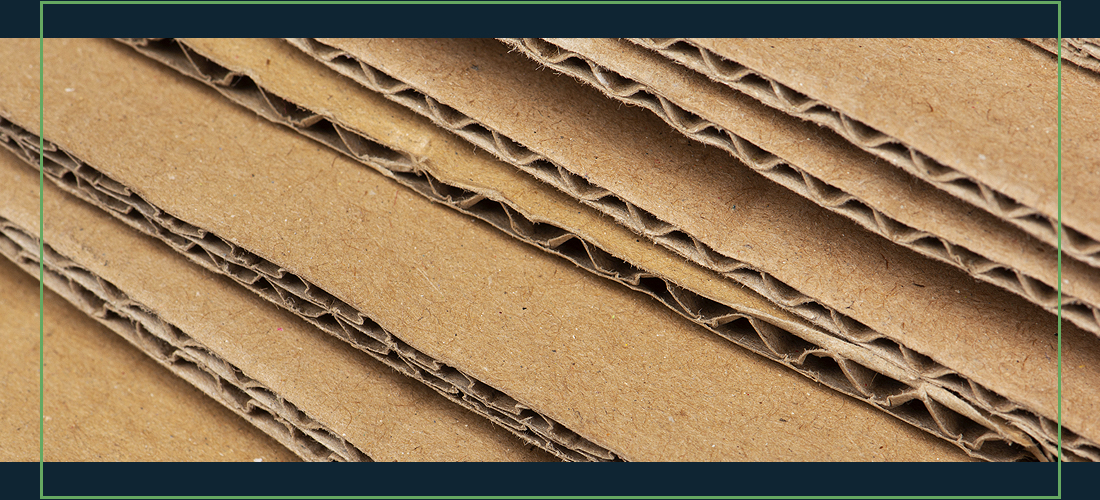
At the core of corrugated cardboard lies a simple yet ingenious construction method. Imagine a sandwich: fluted material serving as the filling, sandwiched between two layers of paper acting as the bread. This fundamental structure forms the backbone of corrugated cardboard's strength and versatility.
The process begins with the creation of a centre fluted sheet, often referred to simply as "fluting." This fluted material, characterised by its undulating ridges, provides the cardboard with its distinctive strength and rigidity. Next, this fluted sheet is carefully bonded to two outer layers of paper, known as the inner and outer liners. Through a precise glueing process, these layers are seamlessly integrated, resulting in a composite material that is greater than the sum of its parts.
By combining these elements, corrugated cardboard achieves a delicate balance of resilience and flexibility, making it an ideal choice for a wide range of packaging applications.


Types of Paper
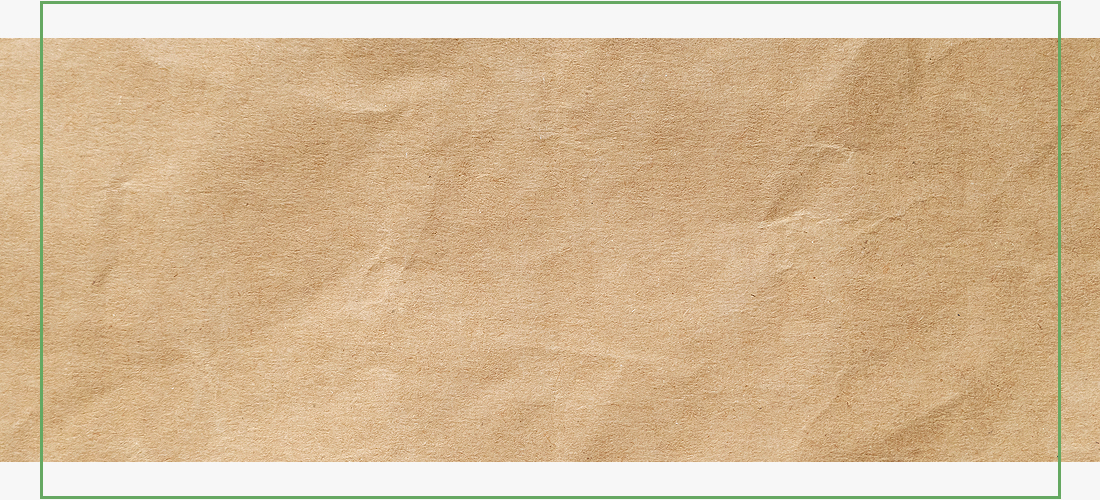
The main factor in defining the properties and application of corrugated material is the type of paper used. There are two primary types: Kraft and Test liners.
-
Kraft Paper: Renowned for its robustness and versatility, Kraft paper is the go-to choice for outer liners in corrugated packaging. Crafted from softwood trees, this paper boasts "Virgin" fibres, sourced directly from the raw material. This purity contributes to its exceptional strength, making it the preferred option for manufacturing cardboard. Beyond its durability, Kraft paper also offers excellent printability, allowing for vivid custom branding and labelling. With an increasing emphasis on sustainability, the industry is witnessing a shift towards responsibly sourced Kraft paper, ensuring the preservation of forests for generations to come.
-
Test Paper: In contrast to Kraft, Test paper adopts a double-layered structure, commonly referred to as "duplex." Unlike Kraft, Test paper utilises recycled fibres, resulting in a slightly lower strength profile. While not as robust as its Kraft counterpart, Test paper remains a cost-effective solution for inner liners in cardboard packaging. Although it may lack the printability of Kraft, Test paper finds its niche in applications where strength takes precedence over aesthetics.
While Kraft and Test papers are the two most popular types of stock used in the manufacture of cardboard, there are a whole host of options to consider when designing packaging, catering to diverse packaging requirements. These include:
-
Kraft (K): Virgin Kraft paper
-
Test 3 (T): Fully recycled liner
-
Fully Bleached White (BW): Fully bleached Kraft liner
-
Mottled Kraft (MK): Mottled white Kraft
-
Semi-Chem (SC)*: Virgin fibres using neutral sulphite semi-chemical process
-
Test 2 (T2): Partly recycled liner paper
-
Chip (C): Waste based liners
-
White Top (WT): White coated recycled liner
-
Oyster (OY): Mottled test liner
-
Waste Based (WB)*: 100% recycled fibres
*Note that Waste Based (WB) and Semi-Chem (SC) are most commonly used for the flutes and not usually used as liners. This is because they offer strength but are not able to be printed on.


Paper Weights and Grams per Square Metre (GSM)
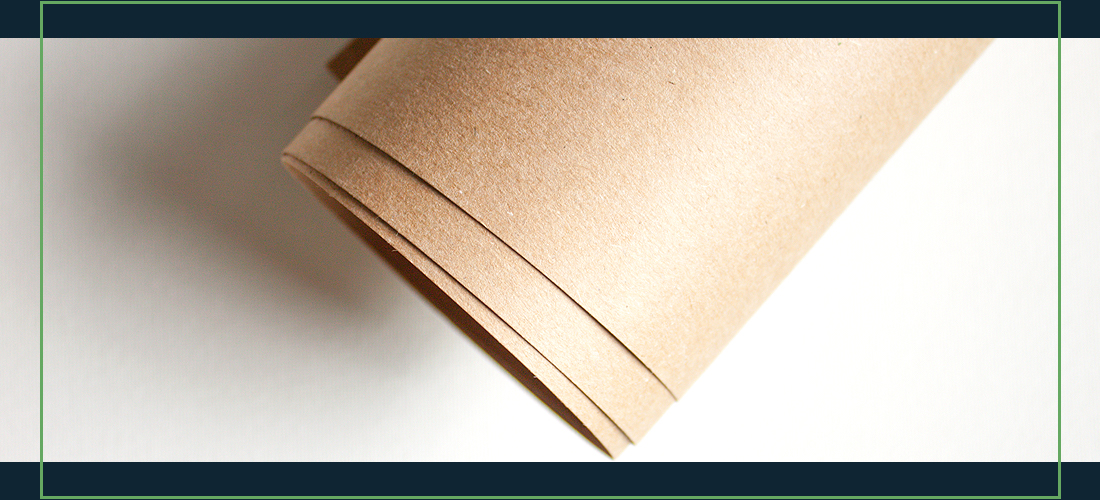
Understanding paper weights is important for selecting the appropriate stock. The standard unit of measurement across the paper and packaging industry is Grams per Square Metre (GSM). This metric provides a standardised way to gauge the weight of various materials, ranging from cardboard to copier paper to folding box board. Simply put, GSM represents the weight of a square metre of the material in grams.
The GSM of the paper liners plays a crucial role in determining the overall strength and durability of the packaging. For instance, if you were to opt for a corrugated board with a 150gsm Kraft paper liner, it would be denoted as '150K'. This notation signifies the specific weight of the Kraft paper used in the liner.
There are a range of standard paper weights commonly used for corrugated material. These include:
-
115/125 gsm
-
185/200 gsm
-
300 gsm
-
140/150 gsm
-
250 gsm
While these are the most popular and widely-used paper weights employed in corrugated material, there is a vast array of GSM grades available in the market. This diversity allows for tailored solutions to meet varying packaging requirements, ensuring optimal performance and functionality.


Types of Wall
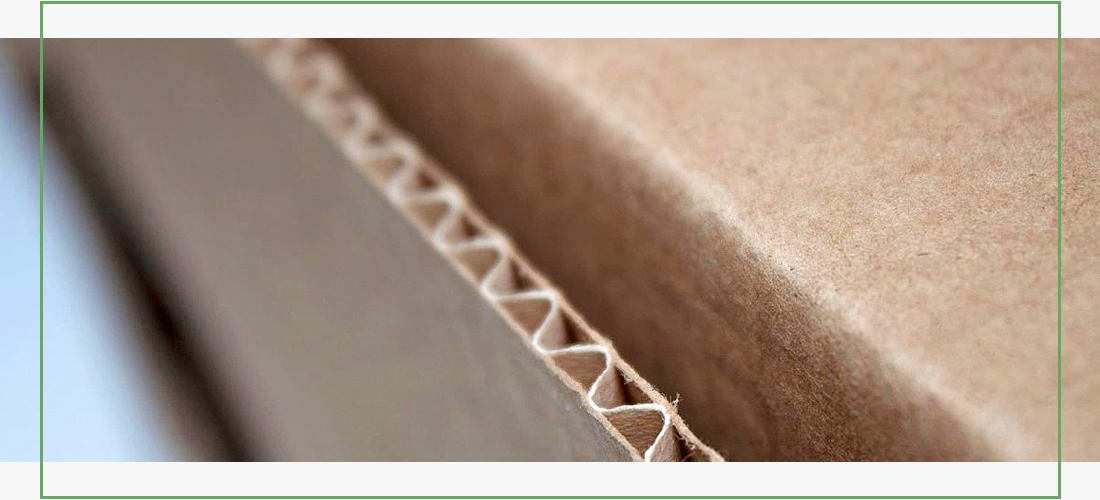
The type of wall used to construct corrugated cardboard significantly influences the strength, durability, and protective capabilities of the material. Understanding the different types of walls is essential for selecting packaging that aligns with the specific needs of your products, ensuring optimal protection and presentation throughout the supply chain. These are:
-
Single Wall: The most basic form of corrugated cardboard consists of two liners with a fluted centre, known as single-wall board. While commonly used, single-wall board may lack the rigidity needed for heavy-duty applications and can be susceptible to bending along the fluting.
-
Double Walled: To address the limitations of single-wall board, double-walled materials are employed. These feature an additional fluting section and liner, providing enhanced strength and rigidity. Double-walled materials offer better protection for heavier items and increased resistance to impact during transit, making them ideal for various packaging needs.
-
Triple Walled: For items requiring an even higher level of protection, triple-walled or Tri-Wall cardboard is utilised. This configuration includes an extra liner and layer of fluting, offering superior strength and durability. Triple-walled packaging is often reserved for expensive or fragile items that necessitate maximum protection during shipping and handling.
-
Quadruple Wall: At the apex of corrugated packaging strength lies quadruple-wall (QW) cardboard sheets. These rare and specialised materials feature four layers of liners and fluting, providing unparalleled protection and durability. Quadruple-wall packaging is typically reserved for highly specialised projects where extreme protection is required.


Types of Fluting
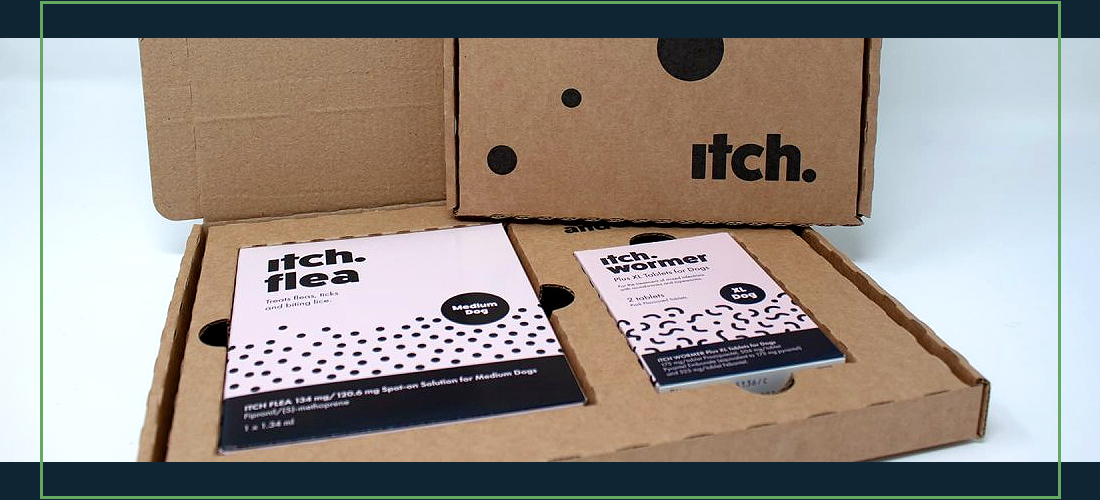
In corrugated packaging, the type of fluting used plays a crucial role in determining the performance and suitability of the cardboard for various applications. Understanding the different types of flutes allows businesses to select packaging that meets their specific needs and product requirements:
-
F Flute (0.7mm): F flute is one of the thinnest fluting options, measuring about 0.7mm in thickness. Despite its thinness, F flute offers excellent printability and is ideal for applications requiring intricate graphics or branding. With around 128 flutes per foot, F flute provides a delicate yet sturdy packaging solution, suitable for lightweight items such as cosmetics, electronics, or specialty food products.
-
E Flute (1 - 1.5mm): Positioned at the lightweight end of the spectrum, E Flute is an extremely fine slute, measuring approximately 1mm to 1.5mm in thickness. E flute features thin, closely spaced flutes and provides a high-quality, smooth surface for printing, making it a popular choice for packaging requiring intricate branding or graphics. It also offers exceptional resistance to crushing and compression, making it ideal for lightweight retail cartons. However, E flute would not be appropriate in a single-walled carton to hold weighty products. E flute has around 90 flutes per square foot.
-
B Flute (3mm): Among the most commonly used flutes worldwide, B flute offers versatility and reliability. With a thickness of approximately 3mm, B flute strikes a balance between strength and flexibility. It is suitable for die-cutting and regular case-making processes, making it a popular choice for a wide range of packaging applications, particularly transit packaging. B flute typically contains 47 flutes per square foot.
-
C Flute (3.5 - 4mm): Ranging between 3.5mm and 4mm in thickness, C flute offers improved compression strength compared to B flute due to its thicker gauge, allowing for higher stacking and housing of lightweight products. C flute is often preferred for packaging that requires extra protection during transit. C flute has around 39 flutes per square foot.
-
A Flute (5mm): A flute is characterised by its thicker profile, measuring approximately 5mm in height. It provides excellent cushioning and shock absorption, making it ideal for protecting delicate items during shipping. With its larger flute size, A flute offers ample space for printing detailed graphics and branding. C flute has approximately 33 flutes per square foot.
-
EB Flute (4 - 4.5mm) [Double Walled]: As a double-wall configuration comprising E and B flutes, EB flute strikes a balance between strength and printability, making it suitable for a variety of packaging applications. With a thickness of approximately 4mm to 4.5mm, EB flute provides excellent transit protection while offering a smooth surface for high-quality printing.
-
BC Flute (6 - 7mm) [Double Walled]: Combining the strengths of B and C flutes, BC flute is a double-wall configuration featuring a thickness between 6mm and 7mm. This combination offers enhanced structural integrity, making BC flute ideal for transit boxes/shipping boxes and items requiring robust transit protection. BC flute is often printed using basic methods such as flexographic or flexo print.
Paper Weights for Fluting
Flutes are typically manufactured from waste-based or fully recycled material, prioritising functionality over aesthetics. Common variants of paper weights used for fluting include:
-
90 GSM WBF
-
112 SC and WBF
-
175 SC and F
-
105 GSM WBF (the most common flute standard)
-
150 SC and WBF


Shorthand Cardboard Descriptions Explained
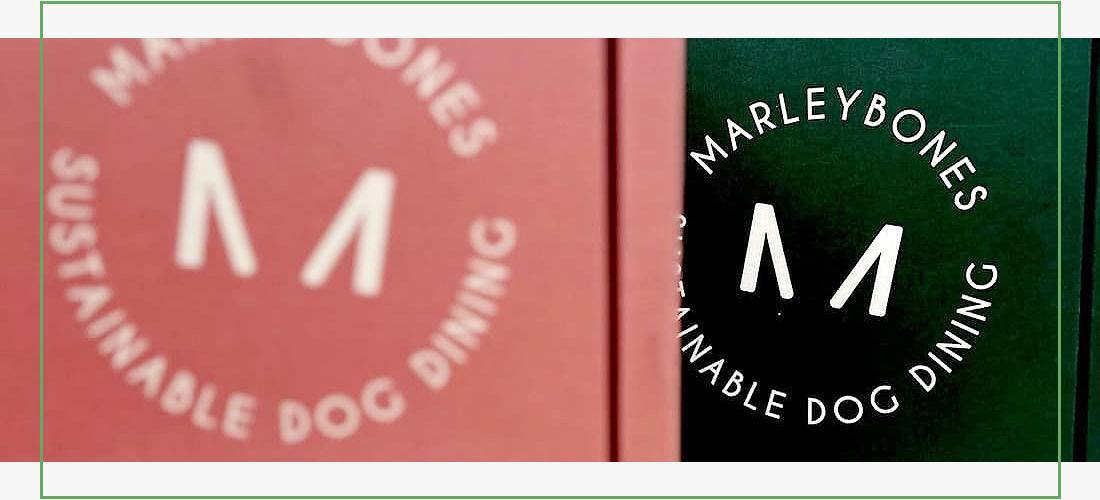
In the packaging industry, shorthand descriptions are commonly used to express the composition of cardboard grades, providing a quick and standardised method for conveying essential information about packaging materials. One such shorthand notation is exemplified by the following format:
150K/E/150T
In this case, this notation represents a cardboard composition consisting of a 150gsm Kraft outer liner, E flute, and 150gsm Test inner liner. This concise format is universally recognised within the packaging industry, facilitating efficient communication and procurement processes across businesses.


Shop Sarcina for Your Cardboard Packaging
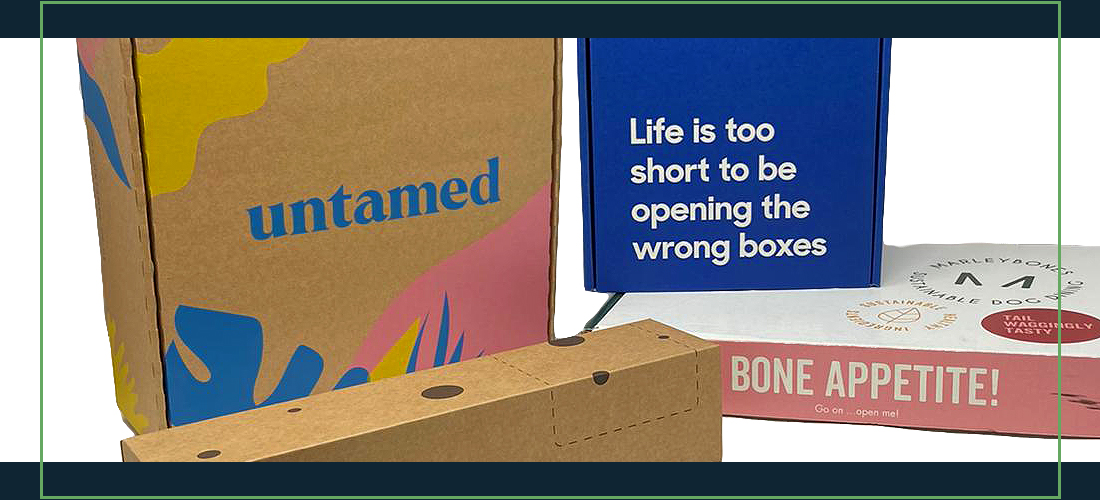
Properly understanding the nature of corrugated packaging empowers businesses and individuals alike to make strategic choices that align with their product requirements and sustainability goals. Armed with this knowledge, we invite you to explore Sarcina's range of custom packaging solutions, tailored to meet your unique needs.
Whether you're seeking lightweight retail cartons or robust transit boxes, Sarcina is your trusted partner in delivering quality packaging solutions. Browse our range of corrugated cardboard cases today or contact us using the enquiry form below to discuss your custom requirements.

